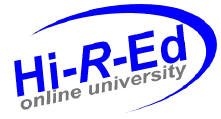|
Reimbursement |
 |
BIA is considered a "procedure" and as with all other procedures it is best to get a preauthorization when available. You can submit for procedure reimbursement on the same day as a clinic visit. Another option is to upgrade the office visit to include the BIA evaluation cost. Current procedural Terminology (CPT) codes that have been used depend on the reason for evaluating body composition and on how you decide to submit for reimbursement.
In the Q&A section of the January 2001 issue of CPT: Your practical guide
to current coding a question about coding for BIA performed by a physician
during an office visit. The response was as follows:
“From a CPT coding perspective, body fat analysis is not a separately
reportable service, and is considered part of the examination component of
evaluation and management (E/M). Therefore, when the physician performs body
fat analysis using skin calipers or bio-electrical impedance analysis during
an E/M service, only the appropriate level of E/M should be reported. No
additional reporting is necessary.”
It may therefore be suggested to either schedule the BIA test on another day, such as a lab draw day, in order to report it as a separate procedure. The alternative is to adjust the E/M visit to reflect the appropriate level when BIA is included.
| As a procedure: | |
| 93720 | total body plethysmography including report and interpretation. This code is listed under vascular studies and is usable for BIA because of the evaluation of fluid status. |
| 93722 | this code is related to the 93720 code, but only includes interpretation and report and excludes the test-taking procedure. |
| 93920 series | non-invasive physiologic studies of upper/lower extremities; 93920 is for upper extremities; 93921 for lower extremities; 93922 is in Medicare listing. |
| 89399 | basal metabolism rate (BMR). This code is listed under laboratory and pathology – basal metabolism rate. Research has been conducted on the use of body cell mass evaluation as the basis for calorie use. The report generated may not use this information to determine the BMR reported, so this code is a bit of a stretch. |
| 99199 | this code is for an unlisted special service or report and may be used to appeal a denial. In some cases, this code is used if a preauthorization is made for the procedure. |
| 99070 | this code is used for supplies and materials related to test. |
| As a visit: | |
| Upgraded visit | the use of BIA may be included to upgrade an office visit. |
| 97530 | this code is under the heading of physical medicine and describes an initial 30 minute visit to provide intervention for therapeutic activities of daily living. |
| 97535 | same as in "b" above, but at 15 minute visit level |
| 97750 | also under physical medicine heading and describes a 15 minute visit for physical performance test for strength (lean body mass assessment) |
| 99215 or 99214 | visit codes for dietitian outpatient services |
ICD9-CM codes that are associated with the need for body composition evaluation should be noted. It is not adequate to note the disease state, unless the "disease" is malnutrition. Whenever possible, obtain preauthorization for the procedure. Potential ICD9-CM codes that may help to justify conducting a BIA test are listed below (listed by ascending number).
| ICD9-CM Codes | |
| 257.2 | gonadal (testis) insufficiency |
| 260 | protein or malignant malnutrition |
| 261 | severe malnutrition |
| 262 | protein-calorie and 3rd degree malnutrition |
| 263.0 | moderate or 2nd degree malnutrition |
| 263.1 | mild or 1st degree malnutrition |
| 263.8 | specified pro-cal NEC* |
| 263.9 | malnutrition (calorie) |
| 269.9 | nutritional disease or dietary inadequacy |
| 272.6 | lipodystrophy (progressive) |
| 276.5 | fluid loss (acute), dehydration |
| 276.6 | fluid retention |
| 278.00 | excessive weight, fat |
| 344.0 | quadriplegia |
| 344.1 | paraplegia |
| 359.9 | diseased muscle |
| 359.1 | muscular dystrophy |
| 428 | congestive heart failure |
| 558.9 | cachectic NEC diarrhea |
| 579.3 | malnutrition following gi surgery |
| 593.9 | renal |
| 728.8 | muscular atrophy: disuse |
| 728.9 | muscle, fatty degeneration |
| 729.9 | diseased musculoskeletal system |
| 780.9 | activity decrease, functional |
| 728.2 | muscular wasting |
| 782.3 | edema |
| 783.0 | anorexia |
| 783.1 | excessive weight gain |
| 783.2 | excessive weight loss (cause unknown) |
| 797 | old age debility |
| 793.7 | abnormal findings without diagnosis: body structure musculoskeletal |
| 783.4 | insufficient growth, physiologic development |
| 799.4 | cachexia, wasting disease |
| 994.2 | insufficient nourishment, food |
| Others | |
| V67.2 | routine follow-up of cancer chemotherapy |
| V67.59 | injury NEC |
| V69.0 | insufficient physical exercise |
| V77.9 | screening for nutritional, metabolic disorders NEC |
*(NEC = not elsewhere classifiable)
Back to Table of Contents